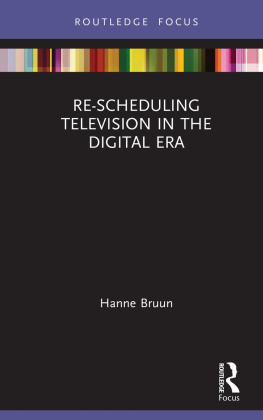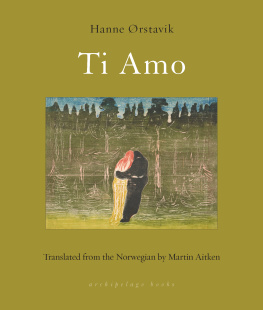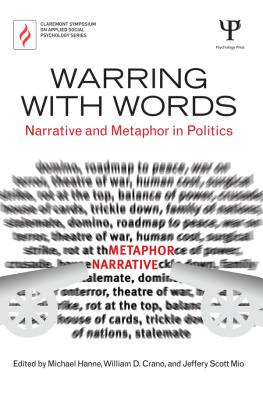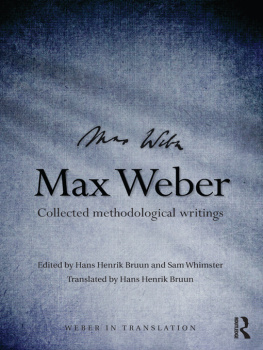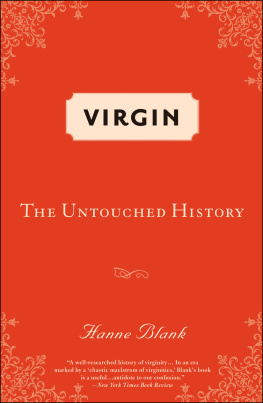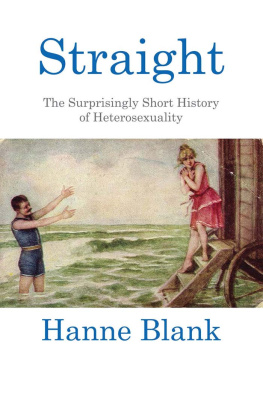Re-scheduling Television in the Digital Era
This book explores how the television industry is adapting its production culture and professional practices of scheduling to an increasingly non-linear television paradigm. Centered around four case studies, the book argues that a new television paradigm is being produced from within the multiplatform television organizations themselves in order to adapt to changing viewer habits and to the tensions between digital and broadcast television.
Drawing on a unique genre and production studies approach, the analysis includes in-depth studies of:
The communicative changes to the on-air schedule as a televisual text phenomenon in the digital era, and how the conceptualizations of the audience are changing in scheduling and curation for multiplatform portfolios;
The changing production culture of scheduling in companies for their multiplatform portfolios;
The dilemmas of curation in multiplatform portfolios.
Situated at the intersection of the humanities and sociology in media production studies, this book will be of key interest to scholars and students of television studies, media production studies and cultural studies and to researchers and media professionals and management in the television industry.
Hanne Bruun is Professor of Media Studies at Aarhus University, Denmark. She is the founder and head of the Centre for Media Industries and Production Studies; the author of four books, including Dansk tv-satire. Underholdning med kant; and the co-editor of four books. She has contributed to several books, e.g. Advancing Media Production Studies eds. Paterson, C. et al., and journals, e.g. Nordic Journal of Media Studies, Critical Studies in Television, Nordicom Review, the European Journal of Communication and Media, Culture & Society.
Routledge Focus on Television Studies
The Evolution of Black Women in Television
Mammies, Matriarchs and Mistresses
Imani M. Cheers
Heroism, Celebrity and Therapy in Nurse Jackie
Christopher Pullen
Re-scheduling Television in the Digital Era
Hanne Bruun
First published 2020
by Routledge
2 Park Square, Milton Park, Abingdon, Oxon OX14 4RN
and by Routledge
52 Vanderbilt Avenue, New York, NY 10017
Routledge is an imprint of the Taylor & Francis Group, an informa business
2020 Hanne Bruun
The right of Hanne Bruun to be identified as author of this work has been asserted by her in accordance with sections 77 and 78 of the Copyright, Designs and Patents Act 1988.
All rights reserved. No part of this book may be reprinted or reproduced or utilised in any form or by any electronic, mechanical, or other means, now known or hereafter invented, including photocopying and recording, or in any information storage or retrieval system, without permission in writing from the publishers.
Trademark notice: Product or corporate names may be trademarks or registered trademarks, and are used only for identification and explanation without intent to infringe.
Library of Congress Cataloging-in-Publication Data
A catalog record has been requested for this book
ISBN: 978-0-367-22675-6 (hbk)
ISBN: 978-0-429-27630-9 (ebk)
Typeset in Times New Roman
by codeMantra
For Bille Bruun Helles
This book is about the television schedule and its production, and it is about the present changes to this TV genre, which features characteristics fundamental to what is understood as television among researchers, even if the academic interest has been very spare. The book goes back to 2014 and highlights the developments in Danish television between 2014 and 2019. It tries to keep a balance between change and continuity in an apparently volatile industry, and my hope is that the findings will contribute to at least a heuristic conceptualisation of the schedule and scheduling in the digital era. The idea for this book came out of a long love affair with television as a medium and many years of research on its different genres and audiences, as well as the industrial and cultural-political contexts that shape the ways in which the medium works and develops. For the last 15 years my research interests have made me focus on an approach in the broader field of media studies, termed media industry and media production studies. Within this approach I have been especially interested in the way in which the genres of television structure and frame the way in which television content is produced and how the professional work of television production changes over time. While working on this book between 2013 and 2019, I have been teaching a master course: Television and Television Theory in the Digital Era at the MA programme in Media Studies at Aarhus University. The students have been part of helping this book along, and I would like to thank all of them, especially the class of 2019, who acted as guinea pigs reading and commenting on the different chapters of the book.
I find myself very fortunate that several of my clever and supportive colleagues at the Centre for Media Industries and Production as well as members of the research programme Media, Communication and Society at Aarhus University share interests similar to mine (Anne Marit Waade, Pia Majbritt Jensen, Eva Novrup Redvall, Henrik Bdker, Per Jauert, Jakob Isak Nielsen, Susanne Eichner, and Niels Brgger). We have had some very important research seminars and informal discussions over the last five years, during which I have been researching, presenting drafts and writing this book. Particular thanks must be given for the academic and moral support as well as the invaluable critical feedback I received from my colleague Professor Kirsten Frandsen, with whom I have written many papers and articles, and edited four books over the years. The value of collaborative work is also underpinned by the academic network I have been part of in the European Communication Research and Education Association (ECREA) section Media Industries and Cultural Production and in the Television section at the NordMedia conferences during recent years. Special thanks go to Professor David Hesmondhalgh and Professor Catherine Johnson for their interest in my work and helpful support.
I would not have been able to write this book without the help of the many media professionals in the Danish Television industry who were kind enough to participate in interviews about how the production of a schedule is done and what the work of a scheduler, a continuity producer or a promotion producer is. Without academic access to the industry and its professional practices, media studies would not be able to remain in proper touch with its objects of study, and I am extremely grateful to the 20 individuals that participated in formal interviews and for their informal talks and correspondence with me, and their giving me the opportunity to observe the kind of work they do. I am particularly grateful to the Head of Scheduling at TV 2 Mette, Rys Johansen, and Head of TV 2 Play, Kurt Holm Jensen, for their interest in helping me many times and commenting on my work; I hope to continue our knowledge exchange and discussions in the future. Writing a book takes up a lot of ones time and energy, and I am very grateful to friends and family, who patiently listened to my endless chatter about the schedule and television. Special thanks must go to my husband Allan for putting up with me for the last several months, a period during which we also became grandparents to the most wonderful baby boy, to whom I dedicated this book. As I put on the finishing touches, the birth and first few months of Bille Bruun Helless life has made me begin to comprehend one of lifes true miracles.

